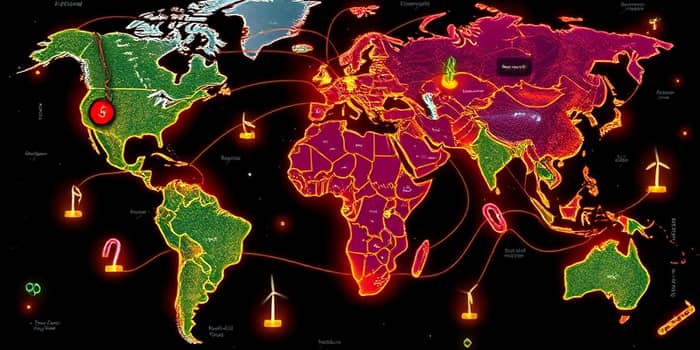
Rare earth elements (REEs) have emerged as a focal point in global competition, reshaping alliances and industrial strategies. Their unique properties power modern technologies and national defense, making them indispensable for modern technologies and high-tech sectors.
Rare earth elements comprise 17 metals—15 lanthanides plus scandium and yttrium—recognized for similar chemical behaviors. Though not always scarce, their extraction and refinement pose complex challenges.
Key applications span multiple industries:
Permanent magnets drive 45% of demand, powering motors and generators essential to EVs and renewable energy.
In 2024, global mine output reached approximately 390,000 metric tons of rare earth oxide (REO) equivalent. Yet production remains highly concentrated.
The top producers in 2023–24 were:
China also refines about 87% of global output, creating China’s outsized refining capacity that leaves other nations scrambling to build processing plants.
The REE market size was 196.63 kilotons in 2025, forecast to reach 260.36 kilotons by 2030 (CAGR 5.8%). Key drivers include:
Light REEs constitute around 80% of production, while heavy REEs like dysprosium and terbium remain scarce and command premium prices. Price swings often follow changes in Chinese export quotas or project delays elsewhere.
China’s dominance in both mining and refining creates strategic leverage. Past export restrictions led to supply shocks, spurring concern about
urgent need for secure supplies among Western governments and industries. Dependence on a single source for defense-critical elements poses national security risks, as substitution is often costly or technically inferior.
The United States, European Union, Japan, Canada, and Australia have launched initiatives to diversify sources. Measures include grants, tax credits, and stockpiling under the Defense Production Act.
India plans to triple its refined REE output by 2032, while Africa aims to supply 9% of global REE by 2029. Yet high capital requirements and regulatory hurdles, especially waste management for radioactive byproducts, slow progress.
Traditional REE mining releases thorium and uranium, complicating tailings disposal and drawing local opposition. ESG criteria increasingly shape project financing.
Advanced recycling and leaching technologies can recover up to 95% of REEs with significantly lower energy use. Such innovations offer a path to circular supply chains and reduced environmental footprint.
Ongoing R&D targets new separation methods and alternative magnet chemistries. Pilot projects using electrokinetic leaching demonstrate promise for advanced separation and recycling techniques that lower costs and emissions.
Downstream integration—building magnet manufacturing and recycling plants—can capture more value domestically and mitigate dependence on raw ore shipments.
To navigate this complex landscape, governments and companies should consider:
By adopting these measures, stakeholders can reduce supply risks, stabilize prices, and foster sustainable growth in the rare earth sector.
In an era where high-tech industries and national security depend on critical minerals, the race for rare earths is more than an economic contest—it is a strategic imperative. Through collaboration, innovation, and responsible sourcing, the global community can ensure resilient and diversified supply chains for generations to come.
References













